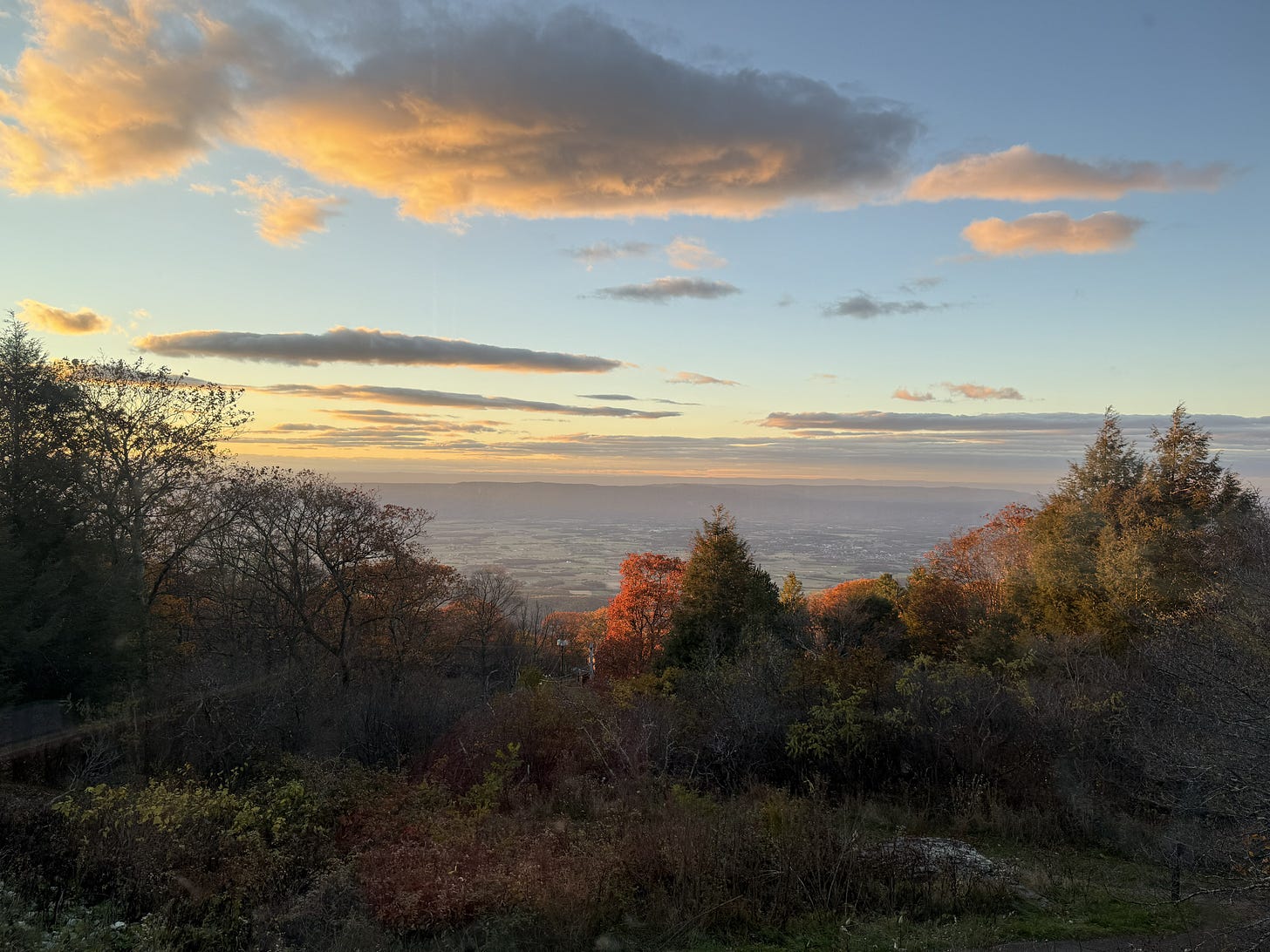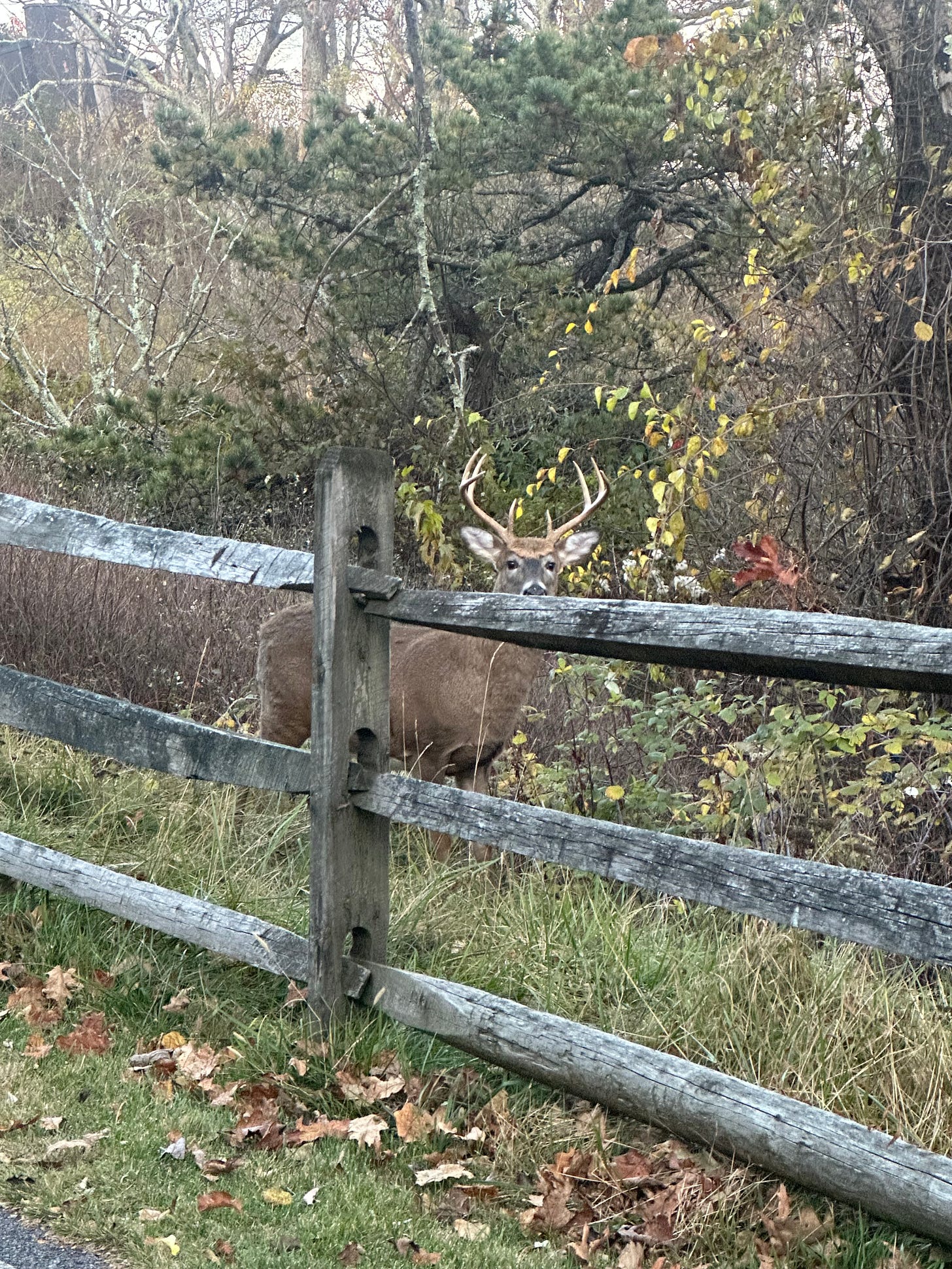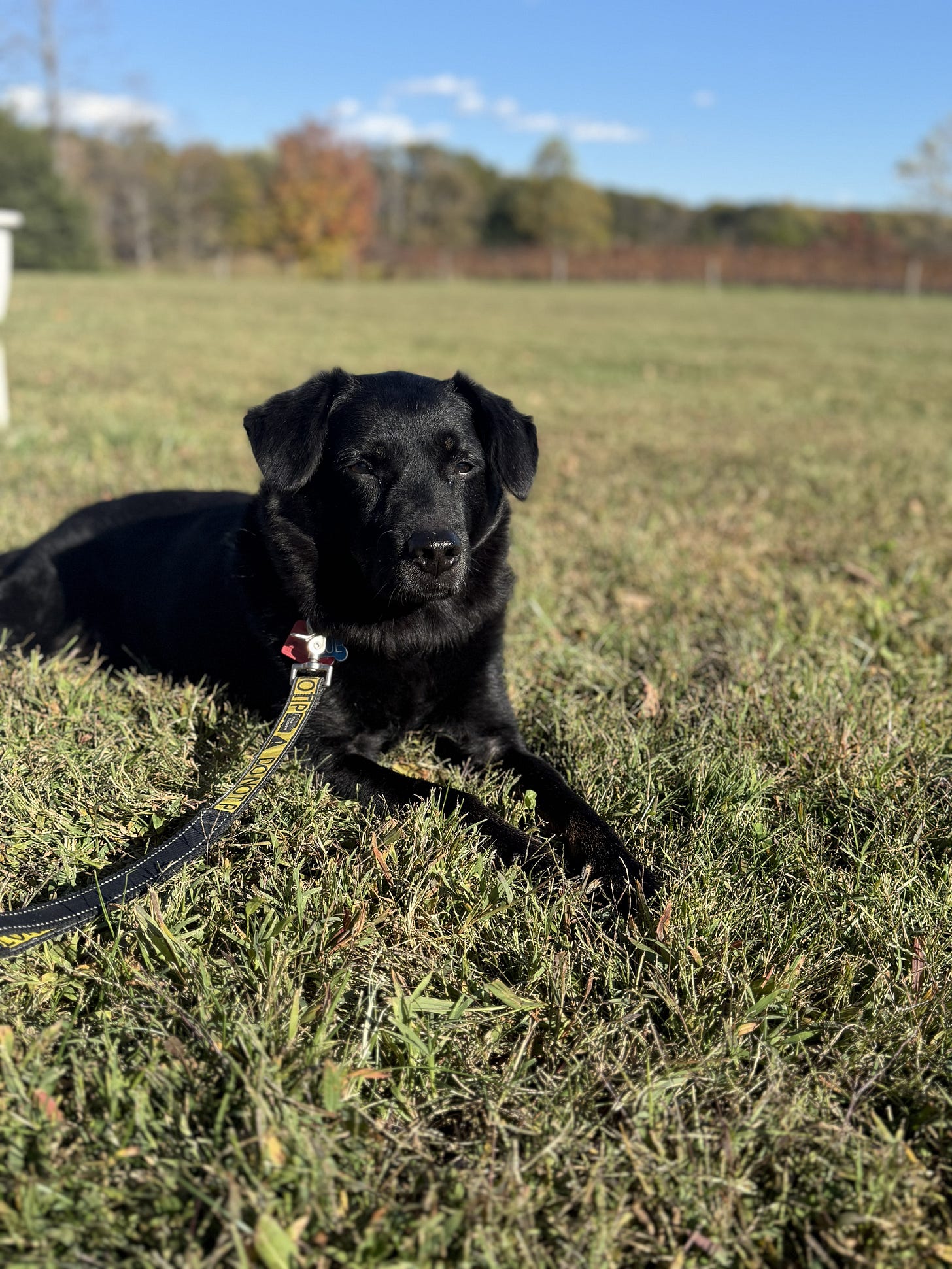Vacate
The Maundy Monday Newsletter - This Week in History October 27 - November 2.
On the ride back from Shenandoah National Park yesterday, Anonymous explained what the word “vacation” meant. This unsolicited lesson was nicer than our earlier conversation at dinner on Thursday evening, when she directly asked that I refrain from discussing all the work I had to do the following morning, a repeated theme since we took this trip beginning on Wednesday. If I didn’t realize it or wanted to admit it, we were on “vacation.”
“It means to vacate,” she explained as we glided down the Blue Ridge Mountains on Skyline Drive, taking in the beautiful fall foliage on either side of us. It was your standard family trip. A little 90s music on the radio, the speedometer at a manageable 35 miles per hour, and Blue in the back seat, panting like a nervous prank caller, providing a steady noise, just heaving constantly because Blue hates the car and wants you to know it.
Anonymous and I are pretty used to the minor inconvenience of Blue’s immediate and unrelenting anxiety. But it pales compared to the inconvenience people used to experience when they first began vacating the cities along the East Coast to rest in this mountainous getaway.
Long before Shenandoah National Park was created, thousands of acres along the Blue Ridge Mountains in rural parts of western Virginia were purchased and developed into a resort for wealthy people who could flee urban life for the summer. Skyland Resort, called initially Stony Man Camp, was founded in 1894 by George Freeman Pollock Jr., the son of a wealthy Washington, D.C., paint manufacturer.
The creeks, waterfalls, and cooler temperatures were instant draws. But before the invention of the telephone or the internet machine, people would trek out to Skyland Resort for the summer, hoping to secure a place, only to be often turned away because all the rooms were taken.
But rich people aren’t that easily deterred. To ensure future trips would not have this hassle, these folks would instead build their own cottages, cabins, and lodges on the site, and Skyland Resort would expand into a rustic retreat for the privileged.
By the early 1900s, enthusiasm for national parks increased. Yosemite officially became the first in October 1890, and Pollock helped lead the charge for creating Shenandoah. This began in earnest in 1926, when the federal government, working with the Commonwealth of Virginia, purchased more land and developed Skyline Drive, the 105-mile road that featured overlooks, picnic areas, and trails. Shenandoah National Park would officially open on December 26, 1935. (Please refer back to this when the MMN gets to December 26.)
The old Stony Man resort is now a cluster of cabins and lodges overlooking the Shenandoah. This place is simply gorgeous. Anonymous explained that she has wanted to go on this trip for the past ten years, but has been unable to for whatever reason. Never mind that we have been together eight of those years, and this is the first time I have learned of her desires. But it was a great trip, one we hope can do again in less than ten years.
One morning, I was greeted by this nice fellow who was curious as to why I was taking the long way to the dining hall when I could have easily turned left and saved about ten minutes. I wish my friend were less judgmental and more outspoken.
A little-known fact: Our panting boy is named after the Blue Ridge Mountains. October 29 is Blue’s Gotcha Day, and Anonymous brought him home from a scary lady who lived at the base of the Blue Ridge in Georgia.
Okay, let’s highlight what else happened this week. As a reminder, these events celebrate their anniversary, ending in 5 or 0. Here’s what I got:
1. Earl Lloyd became the first African American to play in the NBA on October 31, 1950. Lloyd was a standout basketball player growing up in Northern Virginia and was eventually drafted by the local team, the Washington Capitols. Two other African American players were drafted that year, Chuck Cooper (Boston Celtics) and Nat “Sweatwater” Clifton (New York Knicks). The Capitols were the first team to tip off that season, which ended up being their only season, folding in 1951. Lloyd would then be drafted again, this time by the United States Army for the Korean War. He would return soon after and win the NBA title with the Syracuse Nationals. His nickname was “The Big Cat,” which is also my nickname on my championship-winning softball team.
2. The Stamp Act went into effect on November 1, 1765. This was the first direct tax on American colonies, and it supported the British military, which was still there after winning the French and Indian War two years earlier. Colonists lost their minds since they had no representation in Parliament to vote against such an action, and “Taxation Without Representation” is still a slogan that now appears on my license plate.
3. President John Adams moved into the White House on November 1, 1800. A few months earlier, Adams had moved to the new national capital from Philadelphia and showed up at the “President’s House” to finally move in, becoming the first president to occupy the White House. But he would not stay very long since he would eventually lose the 1800 election to Thomas Jefferson, who would move in the following March.
My least favorite holiday is here – Halloween. I’ve never been into the idea of being scared or celebrating death, but whatever, kids like it, so I need to get over myself. We are fortunate to live on a street flooded with kids, and I enjoy seeing the customs – they aren’t all scary.
I’ll work on another essay for this week. Anonymous ships out for the week beginning today, but is back before the treating starts, so I’m grateful for that. Let’s vacate at the end of the week!
If you enjoyed this essay and the Maundy Monday Newsletter series, please click ❤️the to help it stand out. I’d also appreciate it if you would subscribe - free or paid – to support my work.
You can also help reach new readers by sharing it on social media.
Thanks for your continued support of Okay History. Grateful.
Okay,
Chris






Glad my research of the area inspired a post!